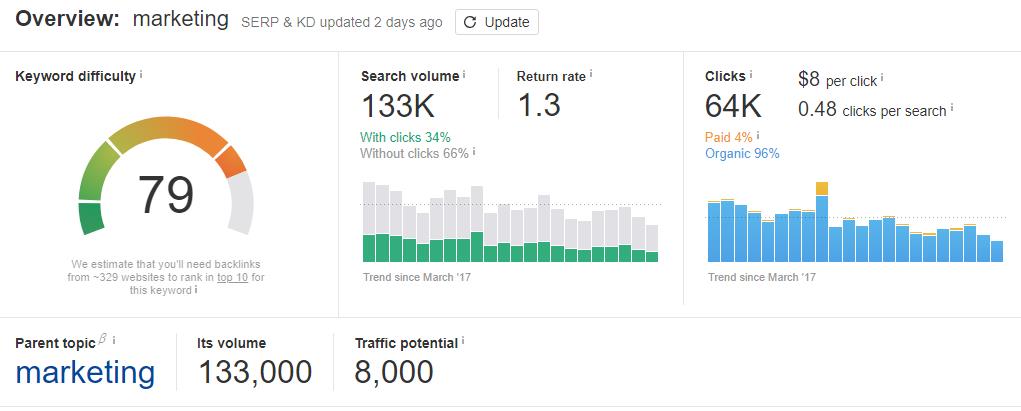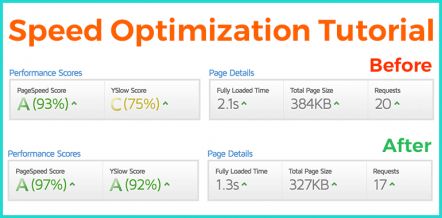Google is the busiest highway of the internet, home to 3.5 billion daily searches. It has managed to capture an immense market share and this has immensely powerful implications for more than the corporation’s bottom line.
Brands across industry sectors are going to great lengths to appease Google. This is the key to performing well in organic search and preventing the sales from going over to the competition. Alas, there are three massive problems.
Firstly, the level of competition is off the charts. Secondly, Google appraises ranking based on a heap of factors. Thirdly, algorithm updates take place every now and then, altering the order of factor importance or introducing new ranking factors altogether. These changes shake the foundations of digital marketing and SEO fields.
Of course, Google’s main goal is not to put us at our wit’s end, but to connect users with the most helpful results. In order to do so, it has to guess the search intent via ranking signals. That is all to say that the best shot you have to rank high is to get familiar with the rules.
Table Of Contents
- 1. Organic Ranking Factors in a Nutshell
- 2. 10 Major Ranking Factors
- 2.1 Website (URL) Architecture
- 2.2 Inbound Links (backlinks)
- 2.3 Meta Tags
- 2.4 Page Speed
- 2.5 Keywords on the page
- 2.6 Domain security
- 2.7 Webpage content quality
- 2.8 Mobile Friendliness
- 2.9 Social and local signals
- 2.10 Other technical SEO specifications
- 3. Conclusion
1 Organic Ranking Factors in a Nutshell
To utmost dismay of many, Google does not publish detailed lists all of its ranking signals. Yet, numerous SEO case studies and SEO tools have brought invaluable insights to light. It has been confirmed that there are more than 200 of ranking factors in existence.
We can divide them into five main factor categories:
- Domain-related factors
- On-page factors
- Off-page factors
- Site-level factors
- Technical SEO factors
We will get into them shortly, but for now, it is crucial to underline that they are not created equal. They play different roles in the ranking equation, but before we get into that, we should revise a couple of fundamental facts.
First off, RankBrain is the mainframe of Google’s prized AI. It sifts through, sorts out, and improves results for users, making tweaks on the fly via sophisticated machine learning (ML) processes. It is capable of contextually changing the importance of factors and uncovering black hat SEO tactics.
Secondly, with the latent semantic indexing also in the tech mix, the search engine is finally getting close to snatching the Holy Grail of organic search: guessing the user intent behind queries.
2 10 Major Ranking Factors
Although we do not possess hands-on knowledge on the fine workings of the algorithm, we can still make it work to our advantage.
These 10 factors are bread and butter of SEO:
2.1 Website (URL) Architecture
Site architecture may not be the single most important factor, but there is a good reason why it comes first on the list. Namely, it is critical to get it right from the get-go (when launching or re-launching a site) because making changes later is rather resource-intensive.
Moving on, Google uses this factor to figure out who you are and what your site is about. It prefers to see content organized in a number of (three is usually optimal) subcategories and clear strings of text (slugs) at the end of the URL.
There are multiple ways to go about this, but silo structuring is certainly one of the most common techniques. It involves thematic grouping of content, which results in a tree-like structure with a root node. Usually, the homepage leads to a limited number of topics, which then branch into subtopics. This kind of organization leaves little room for guesswork on the part of Google’s bots.
One thing is for sure, better the structure of your site, less would be the off-page activities that you’d need to do to rank higher on the SERP’s.
2.2 Inbound Links (backlinks)
An inbound link is a hyperlink that leads to your website and originates from an outside domain. These authoritative referral sources make a big difference in the SEO game. Among other things, Google’s PageRank algorithm uses this piece of the SEO puzzle to determine your “link score”.
In other words, backlinks serve as prime indications of trustworthiness and authority for Google. And it is easy to see why: other people deem your content worthy enough to place a link.
And so link building remains an SEO staple tactic moving deeper into 2019 and beyond. The sheer quantity of links certainly counts, but one cannot overlook link quality (authority). Indeed, risks associated with link building hide under the black hat of SEO.
So, steer away from spammy, theme-inconsistent, and low-quality links. Carry out regular backlinks audits and confirm that they do not do more harm than good. Likewise, refrain from over-optimizing anchor texts: your all-important authority and ranking are at stake here.
2.3 Meta Tags
Meta tags are an often-overlooked component of modern content management systems (CMS). They communicate the purpose of a page and define the roles its different sections have regarding the topics and keywords.
As you probably know, three different types of tags you have to be aware of:
- Title tags— they denote the title of the article, which can be seen in its HTML. Google uses it to generate a clickable blue headline in SERP.
- Image Alt Text— Google crawls images in a different way and encourages people to help them do so via alt texts. The purpose of these tags is to describe the image in respect to the webpage context.
- Meta Description—is a string of text displayed under blue links in SERP that act as a summary. It may or may not include target keywords.


The good news is that there is a wide array of tools for handling this SEO staple.
For instance, WordPress users can take advantage of a Rank Math SEO plugin to easily integrate Meta Boxes, populate meta descriptions, alter global meta, and attach additional metadata. This is an integral part of optimization because WordPress tags pose relevancy signals that are specific to this CMS.
2.4 Page Speed
Page Speed’s position as a ranking factor has been cemented with Google’s Speed Update. It helps as well that speed is quite self-explanatory: it refers to the time it takes for a page to load after a user clicks on it.
Improving it revolves around optimization of on-page factors such as compressing images and media. So, do away with elements that weigh the site down. While at it, keep in mind that even slight speed differences have an impact on bounce rates, which are a substantial relevance signal.
Ultimately, the million dollar question is what the optimal speed is. Well, pages that load within three seconds or less are considered fast. That being said, one part of the internet is encroaching on the second barrier. Not surprisingly, top e-commerce websites like Amazon are leading the speed optimization race.
Like it or not, internet users seek answers and they want them fast.
2.5 Keywords on the page

Keyword optimization is a vital aspect of any successful SEO strategy.
For example, keywords in title tags are a surefire way for Google to evaluate whether your pages are relevant to search queries. The closer the keyword is to the title (ideally within first 100 words), the better it is for your ranking.
Beyond that, keywords should be present in:
- Article body
- Alt texts
- H1 tag
While doing keyword research, you may prioritize exact match keyword. That is a prudent course of action, but do bear in mind that the meaning of this term has evolved. Today, it refers to the matching of the intent behind a keyword. Simply put, users should be served the information they are looking for.
Along the similar lines, be mindful as well that Google expects to see increased engagement rates as a result of optimal keyword selection and placement. It also implores websites to not go overboard with keyword density. Overstuffing provokes ranking penalties and the same goes for tactics like keyword permutation.
Play by the book or risk at your own peril.
2.6 Domain security
Google aims to help users stay on the safe side of the internet and separates secure from non-secure websites. It goes without saying you want to be recognized as a secure website. This begs the question of what HTTP is and how this protocol functions.
In a nutshell, this is a method of transferring digital information between users’ browsers and websites. HTTPS represents a secure protocol version and in order to have it shown for your domain, you have to gain an SSL certificate, which is directly indexed by Google.

Furthermore, encryption methods can also contribute to your ranking as well. They are a go-to cybersecurity strategy for protecting user’s connection and keeping hackers and identity thieves at bay. So, if you do not want to see your ranking plummeting, encrypting and adding one “S” to your HTTP is a must.
2.7 Webpage content quality
Content is still the king of SEO realm. Its coveted position echoes Google’s chief mission and that is offering impeccable user experience (UX). This state of affairs brings massive ranking points to websites that feature unique and valuable content pieces.
RankBrain comes into play again, leading visitors to naturally-flowing content with in-depth, comprehensive, and accurate information. Panda, Fred, and The Maccabee Updates (2018) progressively put more emphasis on quality, giving plenty of incentives to webmasters to avoid content scraping, duplication, as well as the aforementioned keyword stuffing.
In addition, you want to pay attention to content length, as highest-ranking pages lean towards the 2,000 benchmark. Another vital aspect is content structure, which is built around elements like sub-headings, bullet points, numbered lists, etc. Finally, remember that regularly updating the content is paramount.
This activity boosts your site-wide freshness factor, whereas both the frequency and magnitude of edits matter. To avoid lagging in this SEO department, put together a content calendar and delight your audience on a daily basis.
2.8 Mobile Friendliness
The desktop has been dethroned as a top source of organic traffic and in the wake of this historic milestone, Google is pushing mobile UX to the forefront of SEO. Its Mobile-first Index, also known as Mobilegeddon, dictates that the algorithm crawls mobile version of a site before a desktop one.
Not only that, but the search engine behemoth is directly punishing websites that are not optimized to small screen sizes. Ushering a new indexing era, Google is assessing a variety of signals, including micro-moments (I-want-to-go or I-want-to-buy, for instance) that take place on mobile devices.
Instead of panicking, employ responsive design and other optimization tactics. Just like with desktop version of your site, Google expects you to foster smooth navigation and ensure usability. So, get rid of intrusive full-page pop-ups, microscopically small text, and other UX killers.
If you do not possess resources and expertise yourself, rely on digital marketing agencies to get the job done. Outsourcing may prove to be useful for improving visibility and even save resources compared to hiring full-time. In any event, mobile optimization cannot be an afterthought, even if the benefits of it are not immediate.
2.9 Social and local signals
The extent of their influence is still debated, but social signals are Google’s means of gauging relevancy and site-wide authority.
Depending on the network in question, there are several types of social signals:
- Shares
- Links
- Pins
- Retweets
- Brand mentions
- Google +1’s (unclear)
They indicate popularity and traction you have with the user base. Hence, they also improve site credibility and page visibility, provided that they do not originate from fake accounts.
Apart from genuineness, the factors taken into account are the number of signals, the authority of accounts behind them, and the text surrounding the link.
As for, local SEO, it is spearheading another major trend that is quickly gaining prominence— local signals. Already, over 40% of all searches have local intent and moreover, it is estimated that 97% of consumers turn to the internet to search local brands/offerings.
So, it does not come as a surprise that Google tends to place local results over “regular” ones. And rest assured that the local business listing and smartphone searches are only going to get bigger.
2.10 Other technical SEO specifications
There are other technicalities worth mentioning before we conclude:
- Schema markup is a data roadmap that enables the search engine to interpret your content. It is suspected to have a substantial effect on click-through rates (CTR) and lead generation efforts. You can use Structured Data Markup Helper or Google’s Testing tool to ensure HTML setup is in perfect order.
- Speaking of HTML, it aids in scoring positive points and in more than one way. To be more precise, webmasters and SEOs keep an eye on URL length and ensure they do not end up in the “excessively long territory”. URL path is another point of interest: it should hit close to home (page) for a slight authority boost.
- At last, the presence of a sitemap facilitates the process of page indexing and brings forth improved visibility. The impotence that each page is given via sitemap.xml file influences ranking for corresponding pages.
3 Conclusion
The scope of work at hand is daunting and the pressure on website owners and SEO experts real.
Knowing how to prioritize SEO efforts in practice requires familiarity with Google’s algorithm and ranking factors. This kind of educated, data-driven approach is the prerequisite for navigating in the tumultuous world of SEO. Naturally, the hard part is actually getting from theory to practice and tailoring winsome SEO strategy.
Well, how about you play it smart and focus on factors that hold the most weight, the “tie-breakers” that elevate your position in SERPs. Following the best SEO practices is likely to pay dividends and help you gain an edge over the competition.
Just make sure to set your eyes on the horizon of the near future, where new changes are brewing. Adapting ahead of time is always a good idea and more often than note, a fast lane to the promised land of SERPs.




